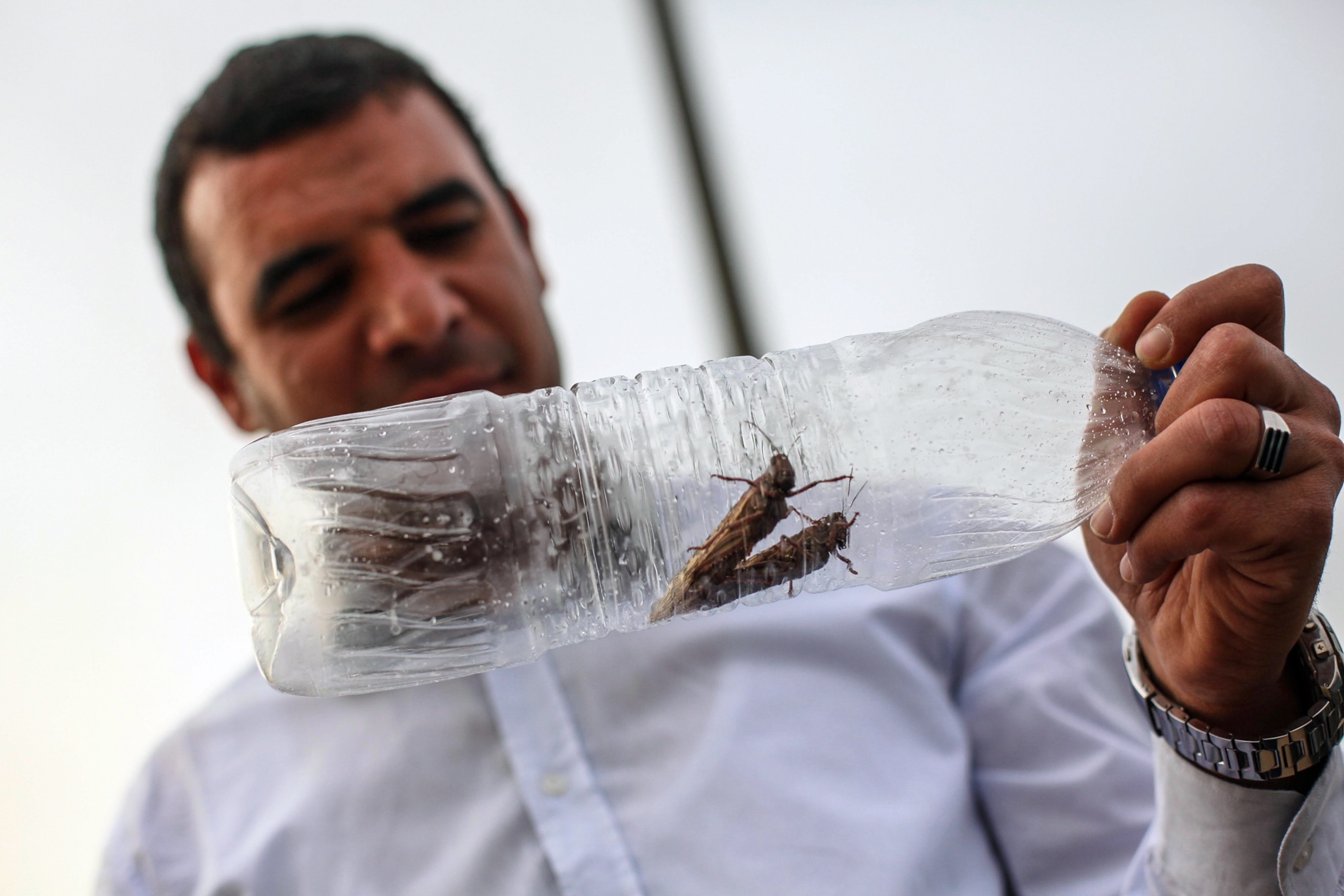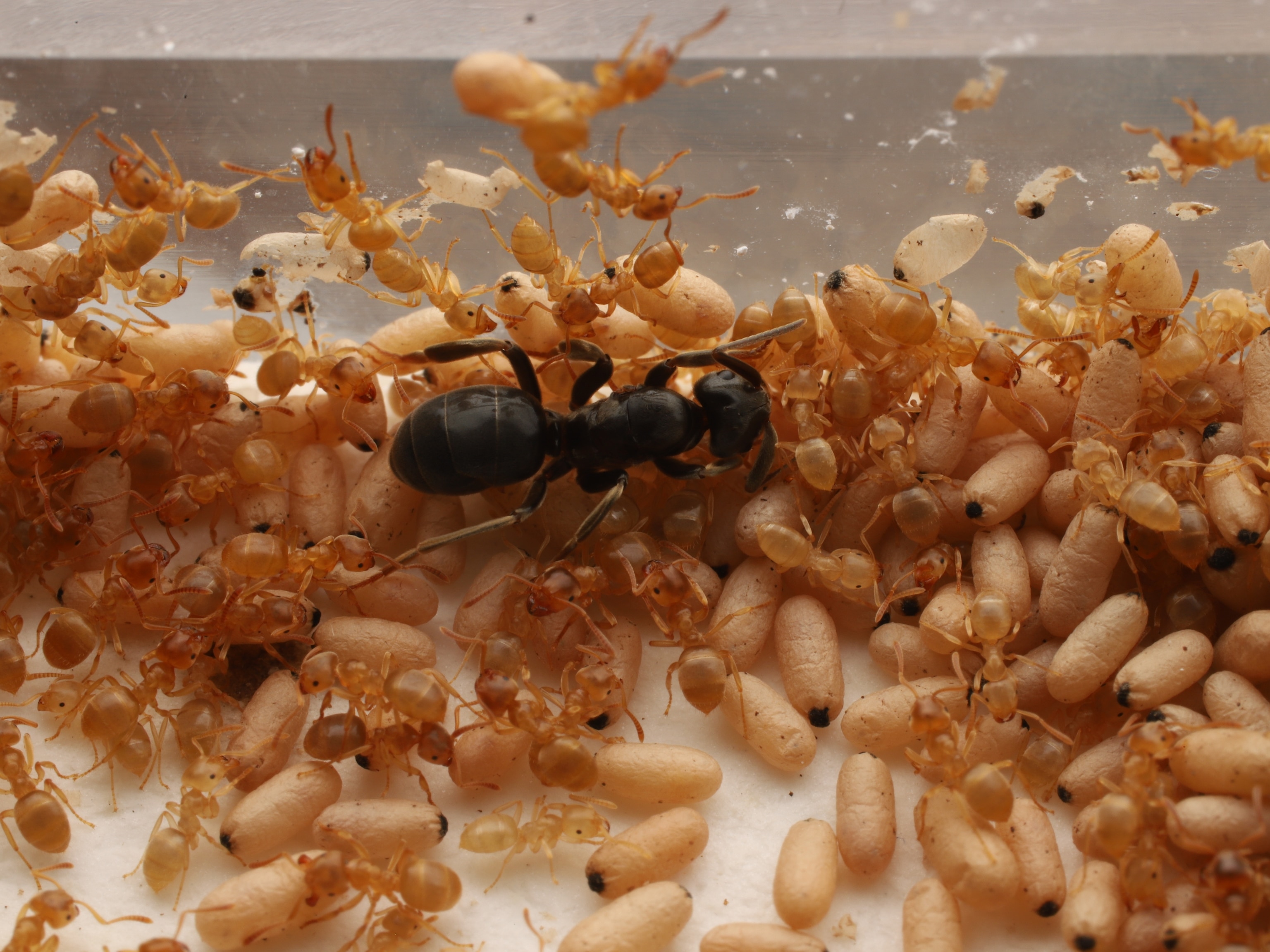
Swarming Locusts Descend on Egypt
Why these creatures band together into swarms that can number in the millions.
They blew into Cairo over the weekend, riding winds from the south. Swarms of noisy desert locusts disrupted traffic, buzzed Cairo Stadium, crawled over golf courses, and even landed at the airport.
"Ancient Egyptian plagues!" one eyewitness joked. (Video: "Plagues: Fact or Faith?")
Mostly a nuisance to city dwellers, the swarms were just passing through on their spring migration, a spokesman from the Ministry of Agriculture said. He urged Cairo residents not to set tires on fire in an effort to disperse the insects. "It will not drive them away, but will only cause damage," he warned.
The swarms posed a bigger threat to nearby farms and orchards, where they could damage or destroy crops. Researchers from the United Nations Food and Agriculture Organization, who have been tracking the build up of desert locusts in southeast Egypt since November, warned that the size of the swarms this year were larger than normal—by some estimates numbering 30 million insects. (See amazing swarm pictures from National Geographic magazine.)
In Israel, meanwhile, officials on Monday set up an emergency hotline, asking residents in that nation to report any desert locust sightings before they got big enough to form swarms—this only weeks before the Passover holiday, which commemorates the exodus of Israelites from Egypt following a series of ten plagues. Locusts were the eighth. ("Swarm Theory": Find out how this behavior is providing useful intelligence.)
Here are a few desert locust facts.
What are desert locusts?
Related to the common grasshopper, desert locusts (Schistocerca gregaria) are normally shy creatures that live in arid regions from North Africa to India.
When local conditions, such as a scarcity of food, force them to crowd together, however, the four-inch-long (ten-centimeter-long) insects undergo dramatic transformations in both appearance and behavior.
Swapping their usual tan and green colors for a gaudy black and yellow, juveniles suddenly become more aggressive, seeking out other desert locusts. Instead of trying to keep a low profile, they get ready to swarm.
This normally happens after a rainy spell. In arid places like Egypt, heavy rains can cause a burst in vegetation, which stimulates a boom in the desert locust population. As long as the food holds out, the insects are happy. But once the desert returns to its normal dry condition, competition for resources promotes overcrowding.
Why do they swarm?
For self-defense, as it turns out. As a team of researchers from Australia, England, and the U.S. discovered a few years ago, locusts in their aggressive phase develop a keen appetite for other locusts. In effect, they become cannibals.
So whenever a desert locust feels another locust bump into its legs, it surges forward to escape from being eaten. This forward motion, repeated by many individuals in a group, becomes a major impetus for the swarm to surge ahead.
How much damage can they cause?
An adult desert locust, it has been estimated, can consume its weight in vegetation daily. A typical swarm can eat as much as 2,500 people can in a single day. And a large swarm—one that stretches for tens of miles and includes millions (or even billions) of hungry locusts—can strip a farmer's field in minutes and leave entire villages with nothing to eat.
One of the worst outbreaks took place in 2004, when desert locusts swept across the Sahel from Mauritania to Egypt, then continued as far east as Israel and as far north as Portugal. Because of their wide-ranging mobility, desert locusts are said to have the potential to impact the livelihood of one in ten people on the planet.
Peter Miller is a contributing editor to National Geographic. He wrote about desert locusts in his book The Smart Swarm: How Understanding Flocks, Schools, and Colonies Can Make Us Better at Communication, Decision Making, and Getting Things Done.




